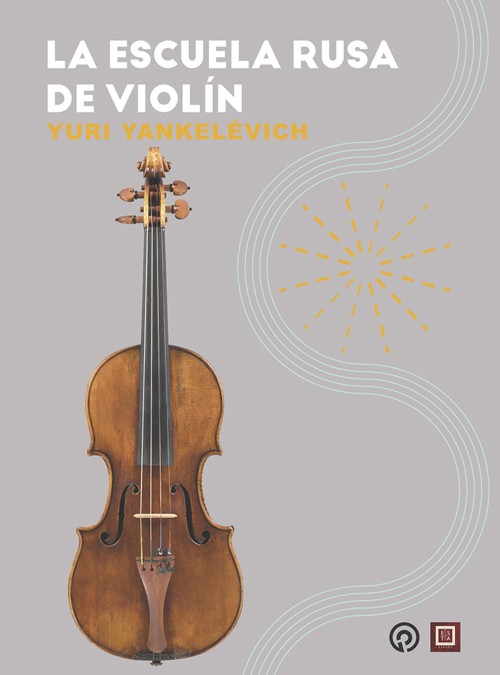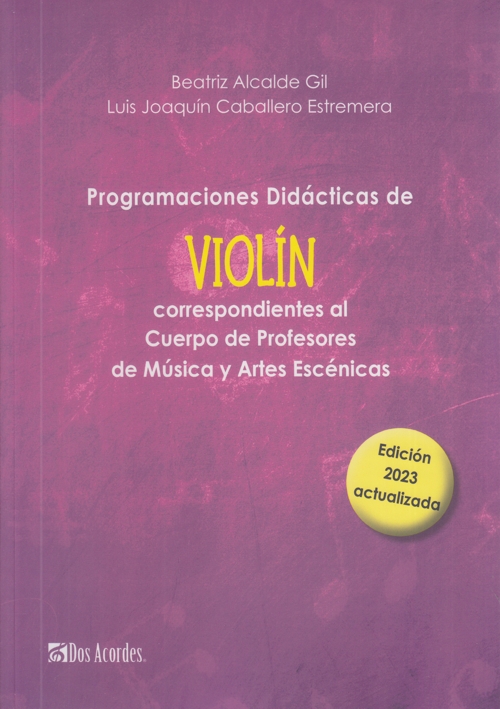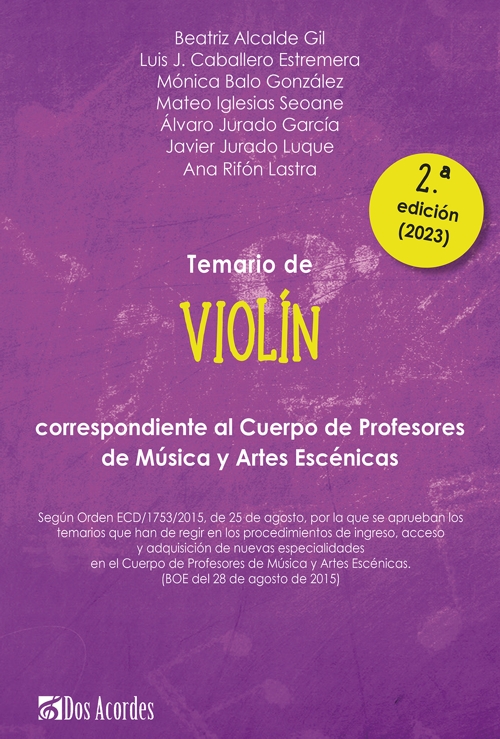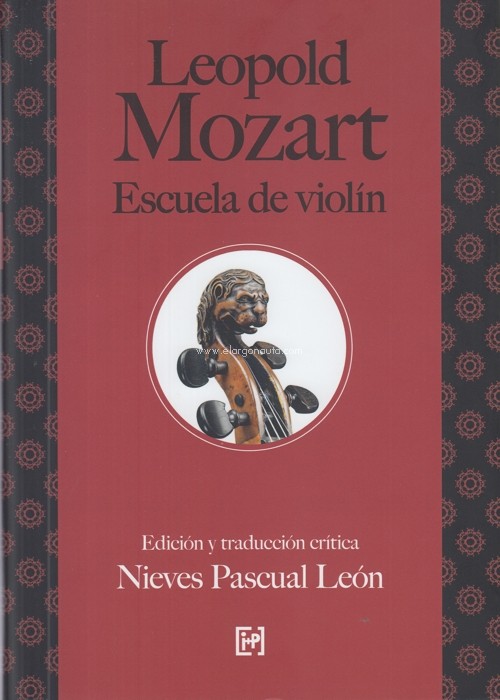
Szigeti on the Violin
Szigeti, Joseph
Dover Publications. 1979Ficha técnica
- EAN: 9780486237633
- ISBN: 978-0-486-23763-3
- Editorial: Dover Publications
- Fecha de edición: 1979
- Encuadernación: Rústica
- Dimensiones: 14,5x21
- Idioma: Inglés
- Nº páginas: 265
No disponible temporalmente
Disponibilidad sujeta a la información del editorPVP. 12,70€
Añadir a la Lista de deseos
Here is a virtual masterclass for violinists, and for all those who love the music of that instrument, by one of the legendary virtuosi of our time.
In a performing career that spanned more than six decades, Hungarian-born violinist Joseph Szigeti established extraordinary new levels of achievement for the modern violin virtuoso. His flawless technique is well documented in the many recordings he made (as William Primrose said, "That man's got more fingers and more strings than the rest of us!"). Szigeti was also a scholar of music, a champion of many important 20th-century works for the violin, an astute observer and critic of the contemporary music world, and above all, an extraordinary musical interpreter with a passionate concern for the accurate, authentic presentation of great music.
These traits are also basic to "Szigeti on the Violin", his genial, insightful tour of the modern world od music and musicianship. Written primarily for the practicing violinist (and the book is certainly required reading for any amateur or professional), its wealth of non-technical material will make "Szigeti on the Violin" fascinating to any music lover, regardless of expertise.
Szigeti's topics, though extraordinary diverse, are designed to exhibit the hard-won lessons of an elder statesman. He discusses the drawbacks of many present-day teaching methods, and the impact of international competitions and the record industry on the careers of young instrumentalists. He evaluates the present state of musical scholarship, and laments the many textual errors that plague performances of such important works as the Beethoven Concerto and "Spring" Sonata, and the Brahms Concerto. He speaks of the historical changes in musical interpretation reflected in the styles of Joachim, Sarasate, Auer, Ysaÿe. Above all, he fills his text with innumerable suggestions for the practicing violinists: guidelines for bowing, vibrato, tone coloration, tempo, etc. Over 350 musical examples, spanning the entire history of classical music, argument the text. Those who read "Szigeti on the Violin" will gain a more subtle and knowledgeable opinion about the vast violin repertoire and the skills needed to perform it.
CONTENIDO:
Introduction
Part I
1 Is concerned mainly with the Then and the Now and the begining of the Author's Lehrjahre
2 Recalls the Queens Hall, Henry Wood, Busoni, Beecham and many others and tells how long it was before the author tackled tbe Beethoven Concerto. A long tour and an enforced stay in a sanatorium
3 Extends the formula of the Then and the Now to the institution of the recital: from the last third of the nineteenth century to he last third of the twentieth century
4 Continues the foregoing by speculating on the recital's chances of survival in the twenty-first century and touches upon the emergence in our own times of the game of chance called 'Competition'
5 Glances at the interaction of competitions with the gramophone industry and contrasts the slow maturing 0£ the virtuosi 0£ torn;er generations (in orchestral and teaching posts) with the mushroom-growth of careers in our time
6 An over-ambitious attempt to compress into far too few pages alarming data about the paucity of string players for orchestras in England, the United States, Germany and France
7 Speculates on the reasons for this state of things, questions whether the tuition right from the early stages onwards is at fault and, in addition, offers some case histories that may help to explain generalities (just as statistical data may help to clarify case histories)
8 Begins with a dictum of Carl Flesch about the importance of the orchestral player in the state of music in general and about tne sins of omission and commission of teachers which in turn leads into saddening data concerning quacks, spurious claims and the like
9 Mainly about a didactic publication that -on the contrary- makes no such claims but proceeds serenely on its honest, musically health-giving course
10 An unsuccessful attempt to sum up, and an admission that a computer could do this better
Part II
11 Examines the question whether a change 0£ string is mote acceptable on a semitone or on a whole tone
12 Stresses the importance of tone colour, that is, the need to respect the composer's directions as to the string to be used, even at the price of discomfort. Hence to some examples where the exact opposite is suggested: namely the use of open strings for the sake of comfort!
13 Tries to dissuade violinists from playing identical repeated notes with the same finger by giving numerous examples from Beethoven, Mozart, Mendelssohn, Max Bruch, César Franck and others
14 Discusses the reasons for the ne glect of a work like Schumann's A minor Sonata and incidentally censures music publishers for reprinting inadequate editions of eighty years and more ago. It also suggests that we sing, hum, whistle in a better tempo than we play
15 Demonstrates the advantages of an 'open' left hand after an excursion into elementary pedagogics quite unbecoming to a book of this kind but illustrated by digressions that range from Kreutzer to Bartók and Hindemith
16 Draws attention to the emancipation we owe to fingered octaves, mentions in passing the 'Geminiani grip' and Bartók's pattern of fourths, harks back to Chapter 12 a propos of tone colour and the judicious choice of strings, speaks about so-called crab-fingerings and ends-unexpectedly-on a hopeful note
17 Outlines the author's suggestion for overcoming an intonation pitfall
18 Devoted to Bach, and thus the cote of the book; just as Bach should be the core of a violinist's life...
19 Follows the changes in our appreciation of the unaccompanied sonatas and partitas over the last hundred years
20 Some Bach misprints; and some othets
21 Questions whether the uncertainties caused by the disagteement of editors are not sometimes responsible for the neglect of certatn compositions. Liberties taken by editors with Tartini, Corelli, Handel
22 Examines some more textual problems-and Beethoven's changes of mind in the Violin Concerto
23 Pleads for respectful adherence to Debussy's precise demands for-momentarily unfashionable-slides between narrow intetvals and incidentally touches upon related subjects
24 Brings into the open certain rhythmic and tempo distortions which we tacitly admit and condone
25 Probes the reasons why a simple um-tata accompaniment figure in Beethoven is difficult
26 Comments on the present disinclination to use open strings and. deplores the lack of concrete describable facts about the playing of great figures like Joachim, Sarasate and others and brings together the little the author has gathered about some of these
27 Gives a glimpse of how critically and with what reluctance the VtIJrato-now indispensable-was regarded around the middle of the nineteenth century, and supplements the preceding chapter with some impressions of Joachim's playing
28 Concerns a bowing device variously called 'reprise de l'archet', the 're-taking' of the bow, and by other names, which enhances the speaking quality of certain phrase fragments
29 In which the author tries his hand at a definition 0£ what he eans by 'enhancement', incidentally invoking memories of Ysaÿe and Kreisler
30 Gives examples of other enhancements to show what can be done to attain a fuller realization of the composer's implied Intentions that cannot always be defined in the printed page
31 More of the same, but with particular emphasis on bowing problems
32 Still more pages on the inexhaustible subject of bowmg mastery, with some examples of bowings that are generally supposed to 'go against the grain'
33 Discusses clockwise and counter-clockwise bowing and touches upon those other endless subjects: bow articulation and fingerings
34 Speculates upon the decline in the use by teachers and students of variations such as those of Tartini and Paganini, written with a didactic aim. Concludes that they cannot be safely dispensed with
35 In the main a plea for the use of that violinist's treasuty, Battók's forty-four Violin Duets, incidentally discussing the ever-present matter of articulation in fragments in the Bartók Second Concerto, in Mendelssohn, Weber, Prokofiev, Bach, the 'Eroica', and Brahms
36 Conclusion
Index





